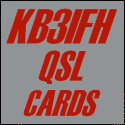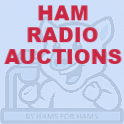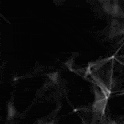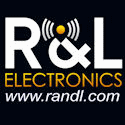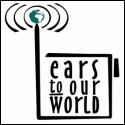Posts Tagged ‘FCC’
 Adios Symbol Rate Limit
Adios Symbol Rate Limit
 The FCC will be voting on and will likely approve a Report and Order that eliminates the symbol rate restriction on HF data transmissions, replacing it with a bandwidth limit of 2.8 kHz. See FCC To Vote on Removing Symbol Rate Restrictions. The symbol rate limit of 300-baud is an obsolete way of limiting the signal bandwidth, created back when the data transmissions were predominately Frequency Shift Keying (FSK). It was a simple, practical way to regulate the bandwidth at that time but technology has moved on. The use of digital signal processing and efficient wireless encoding techniques require a better approach to bandwidth regulation.
The FCC will be voting on and will likely approve a Report and Order that eliminates the symbol rate restriction on HF data transmissions, replacing it with a bandwidth limit of 2.8 kHz. See FCC To Vote on Removing Symbol Rate Restrictions. The symbol rate limit of 300-baud is an obsolete way of limiting the signal bandwidth, created back when the data transmissions were predominately Frequency Shift Keying (FSK). It was a simple, practical way to regulate the bandwidth at that time but technology has moved on. The use of digital signal processing and efficient wireless encoding techniques require a better approach to bandwidth regulation.
A practical impact of this change is to allow higher speed protocols such as PACTOR-4 having a bandwidth of 2.4 kHz. I suspect we will see other protocols emerge that squeeze the best data rate out of the 2.8 kHz bandwidth.
Living in a Narrowband World
The FCC proposal implements a 2.8 kHz bandwidth limit on data emissions on the HF bands. Some folks have suggested a narrower bandwidth while others argue that wider bandwidth signals should be allowed. And some even think we should have no bandwidth limit at all.
The problem is that the amateur HF bands are not very wide. For example, the popular 20m band is 14.0 to 14.350 MHz, providing only 350 kHz of spectrum. Common practice on this and the other HF bands is to use modulation types that have bandwidths of 3 kHz or less. (Yeah, AM signals are twice that wide, at 6 KHz, a topic for another day.) Of course, CW and some of the data modes are much narrower than 3 kHz. But the general approach to regulating HF is to allow many narrowband signals on the band. Limiting HF data transmissions to 2.8 kHz bandwidth is consistent with existing practice while still allowing for innovation and experimentation.
VHF/UHF Bandwidth Limits
The FCC also plans to issue a Further Notice of Proposed Rulemaking (FNPR) that:
- Proposes to remove the baud rate limitation in the 2200 meter and 630 meter bands, which the Commission allocated for amateur radio use after it released the Notice of Proposed Rulemaking in 2016.
- Proposes to remove the baud rate limitation in the VHF and UHF bands.
- Seeks comment on the appropriate bandwidth limitation for the 2200 meter band, the 630 meter band, and the VHF/UHF bands.
I won’t comment on the 2200 meter and 630 meter bands. The FCC proposes to remove the symbol rate limit on the VHF and UHF bands and asks what bandwidth limit is appropriate. The current bandwidth limits are 20 kHz for the 6m and 2m bands, 100 kHz for the 1.25m and 70 cm bands, and the FCC seems fine leaving these the same. Authorized emission types are listed in FCC Part 97.305.
With 4 MHz of spectrum, the 2m band is much wider than any of the HF bands. It might be tempting to conclude that there is plenty of room for wideband signals on this band. Many hams think 2 meters is just used for FM simplex and repeaters but a closer look reveals that it supports many diverse modes: weak-signal SSB/CW, meteor scatter, EME, FM simplex, FM repeaters, digital voice modes (D-STAR, DMR, Fusion), satellites, and more. The 20-kHz limit seems appropriate, as it roughly matches the bandwidth of the most common (FM) voice signals on that band. It is not an appropriate band for trying out wider bandwidth signals.
The 6m band should probably keep the same 20-kHz limit. (I don’t think there is a compelling reason to change it.) The 1.25m band already allows 100-kHz bandwidth data signals, which some radio amateurs have used for higher-speed data links (still not what I would call wideband).
The 70 cm band is much bigger (420 MHz to 450 MHz) and could accommodate some wider bandwidth signals. Perhaps the existing 100-kHz limit should be increased? Keep in mind that fast-scan ATV is allowed on this band with a bandwidth of 6 MHz. Maybe we can make some room for a few larger bandwidth data channels, to encourage innovation and experimentation.
The bands above 70 cm have no bandwidth limit other than the signal must stay within the designated ham band. It has been this way for a long time, without causing any issues (that I know of).
Conclusion
The FCC’s proposal makes a lot of sense and it is long overdue. Frankly, it is a bit of an embarrassment that it has taken so long.
Better late than never.
73 Bob K0NR
The post Adios Symbol Rate Limit appeared first on The KØNR Radio Site.
 Interested in Amateur Radio Digital Mode FT8 Operations?
Interested in Amateur Radio Digital Mode FT8 Operations?
A VISUAL + AUDIO AIR CHECK OF DIGITAL MODE FT8 QSOs, ON THE 30-METER BAND
Here is a video capture of the reception and transmission of many digital FT8-mode amateur radio high-frequency (HF; Shortwave) communication signals. This video is a front-seat view of the software operation performed at the radio room of amateur radio operator, NW7US, Tomas Hood.
The software packages demonstrated are installed and operational on a modern personal computer. The computer is connected to an Icom IC-7610 radio transceiver, controlled by the software. While there is no narration in the video, the video provides an opportunity for you to see first-hand how typical FT8 operations are performed. The signals can be heard.
The frequency used for the FT8 communication in this video is on or about 10.136 MHz, in the 30-Meter shortwave amateur radio allocation (or, band). As can be seen, the 30-Meter band was active at this time of day (0720 UTC, onward–local nighttime).
In this video you see (and hear) NW7US make two-way contacts, or QSOs, with stations from around the country and the world.
There are amateur radio operators within the amateur radio community who regard the FT8 digital mode (FT8 stands for “Franke-Taylor design, 8-FSK modulation“, and refers to the mode created by Joe Taylor, K1JT and Steve Franke, K9AN) as robotic (automatic, automated, and unattended) computer-to-computer communications, and not ‘true’ human communications–thus negating the spirit of ham radio. In other words, FT8, in their opinion, is not real amateur radio. While they pontificate about supposed automated computer communications, many of those holding this position have not installed and configured the software, nor tried communicating with the FT8 digital mode. They have perhaps formed their anti-FT8 opinion in a vacuum of knowledge. (This writer has other issues with FT8, but not on this point–see below)
As you watch the video linked in this article, consider these concepts:
+ A QSO is defined (as per common knowledge–see below) as the exchange of at least the minimum information needed as set by the requirements of a particular award, or, as is defined by law–for instance, a QSO would have at least an exchange of the legal call sign assigned to the radio station and/or control operator, the location of the station making the transmission, and a signal report of some kind about the signal received from the other transmitter at the other end of the QSO.
+ Just how much human involvement is required to make a full FT8 QSO? Does WSJT-X software run all by itself, with no human control? Is WSJT-X a robot, in the sense that it picks a frequency, then initiates or answers a CQ call automatically, or is it just powerful digital-mode software that still requires human control?
The video was captured from the screen of the PC running the following software packages interacting together as a system:
+ WSJT-X: The primary software featuring the digital mode, FT8. (See below for some background on WSJT-X software.)
+ JTAlert: Provides several audio and visual alert types based on decoded Callsigns within WSJT-X.
+ Log4OM, Version 2: A full-featured logging program, which integrates well with WSJT-X and JTAlert.
+ Win4IcomSuite: A full-featured radio controlling program which can remote control rigs, and provide control through virtual communication port-sharing.
+ Com0Com: The Null-modem emulator allows you to create an unlimited number of virtual COM port pairs and use any pair to connect one COM port based application to another. Each COM port pair provides two COM ports. The output to one port is the input from other port and vice versa.
As mentioned, above, the radio used for the communication of FT8 at the station, NW7US, is an Icom IC-7610 transceiver. The antenna is an off-center fed dipole that is over 200 feet in total length (end-to-end measurement).
Some Notes:
About WSJT-X
WSJT-X is a computer program used for weak-signal radio communication between amateur radio operators, or used by Shortwave Radio Listeners (SWLers; SWL) interested in monitoring the FT8 digital communications between amateur radio operators. The program was initially written by Joe Taylor, K1JT with Steve Franke, K9AN, but is now open source and is developed by a small team. The digital signal processing techniques in WSJT-X make it substantially easier for amateur radio operators to employ esoteric propagation modes, such as high-speed meteor scatter and moonbounce.
WSJT-X implements communication protocols or “modes” called FST4, FST4W, FT4, FT8, JT4, JT9, JT65, Q65, MSK144, and WSPR, as well as one called Echo for detecting and measuring your own radio signals reflected from the Moon. These modes were all designed for making reliable, confirmed QSOs under extreme weak-signal conditions. JT4, JT9, and JT65 use nearly identical message structure and source encoding (the efficient compression of standard messages used for minimal QSOs). They use timed 60-second Transmit/Rreceive (T/R) sequences synchronized with UTC (Universal Time, Coordinated). JT4 and JT65 were designed for Earth-Moon-Earth communications (EME, or, moonbounce) on the Very-High Frequency (VHF), Ultra-High Frequency (UHF) and microwave bands. JT9 is optimized for the Medium-Frequency (MF) and High-Frequency (HF) bands. It is about 2 dB more sensitive than JT65 while using less than 10% of the bandwidth. Q65 offers submodes with a wide range of T/R sequence lengths and tone spacings.FT4 and FT8 are operationally similar but use T/R cycles only 7.5 and 15 seconds long, respectively. MSK144 is designed for Meteor Scatter on the VHF bands. These modes offer enhanced message formats with support for nonstandard call signs and some popular contests. (The MSK in MSK144 stands for, Multiple Frequency Shift Keying.)
FST4 and FST4W are designed particularly for the Low-Frequency (LF) and MF bands. On these bands, their fundamental sensitivities are better than other WSJT-X modes with the same sequence lengths, approaching the theoretical limits for their rates of information throughput. FST4 is optimized for two-way QSOs, while FST4W is for quasi-beacon transmissions of WSPR-style messages. FST4 and FST4W do not require the strict, independent time synchronization and phase locking of modes like EbNaut.
As described more fully on its own page, WSPR mode implements a protocol designed for probing potential propagation paths with low-power transmissions. WSPR is fully implemented within WSJT-X, including programmable band-hopping.
What is a QSO?
Under the title, CONTACTS, at the Sierra Foothills Amateur Radio Club’s 2014 Technician Class webpage, https://www.hsdivers.com/Ham/Mod15.html, they teach,
An amateur radio contact (called a QSO), is an exchange of info between two amateur radio stations. The exchange usually consists of an initial call (CQ = call to all stations). Then, a response from another amateur radio operator, and usually at least a signal report.
Contacts can be limited to just a minimal exchange of call signs & signal reports generally between amateurs previously unknown to each other. Very short contacts are usually done only during contests while longer, extended ‘rag chews’ may be between newly met friends with some common interest or someone you have known for a long time.
Wikipedia has an entry for QSO, too.
My Issue With FT8 and WSJT-X
I have written in the past, on this website, about an issue that came about during the course of the development of the WSJT-X software package. The development team decided to widen the slice of ‘default’ (pre-programmed) frequencies on which to operate FT8. The issue was how the choice of new frequencies was made, and what choices were implemented in an upcoming software release. Read more about all of this, in these three articles:
+ Land (er, FREQUENCY) Grab (Part 1)
+ One Aspect of Amateur Radio: Good Will Ambassadors to the World
+ In Response — Can’t We All Just Get Along?
Has this issue been resolved? For now, yes. There appears to be more coordination between interested groups, and the proposed new frequencies were removed from the software defaults in WSJT-X. At least, up to this point, at the time of publishing this article.
..
 My Comments On The Proposed FCC License Fees
My Comments On The Proposed FCC License Fees
 You have probably heard about the FCC proposal to establish a $50 application fee for Amateur Radio licenses. This is part of an overall redesign of the FCC’s fee structure, affecting many radio services, not just amateur radio.
You have probably heard about the FCC proposal to establish a $50 application fee for Amateur Radio licenses. This is part of an overall redesign of the FCC’s fee structure, affecting many radio services, not just amateur radio.
The Notice of Proposed Rule Making (NPRM) is found in Docket 20-270. The public is invited to submit comments on the proposal via the Electronic Comment Filing System (ECFS). It is relatively easy to do. You can upload a document with your comments or use “express comment” to just type in your comments. If you are short on time, you could simply submit a few sentences supporting or opposing the licensing fee along with your reasoning. The only tricky thing you need to know is the proceeding number: 20-270.
I thought this was important enough that I put together my thoughts and submitted them. The short version of my comments are:
- The $50 fee seems excessive, compared to the cost of relatively simple amateur radio license transactions. (If it really costs the FCC $50 to do this, they need to redesign their system.)
- The $50 fee will be a barrier to getting an amateur radio license for many potential licensees. That’s my opinion based on interacting with a large number of new licensees coming through our club’s Technician license class.
- I support charging a smaller fee, in the range of $15 to $25.
You can read my complete comments here:
Robert Witte K0NR Comments MD Docket No. 20-270
73 Bob K0NR
The post My Comments On The Proposed FCC License Fees appeared first on The KØNR Radio Site.
 Land (er, FREQUENCY) Grab (Part 1)
Land (er, FREQUENCY) Grab (Part 1)
This article is part one in a multi-part series. Part 2 is located here: One Aspect of Amateur Radio: Good Will Ambassadors to the World. Part 3 is located here: In Response — Can’t We All Just Get Along?
We’ve all heard it at least once: no one owns a frequency.
By law, amateurs must keep the transmissions from their station within the bounds of the allocations granted to license-holding operators–within these bands that are allocated for amateur radio use. Amateurs are expected to follow band-plans, which guide us to which mode can be used in a band.
Subbands — Band Plans
There are many decades of constant refining of the standard operating procedures–perhaps we can call them, traditions–that, for the most part, work out pretty well for most amateur radio operations on our precious allocations in the radio spectrum. Each band–a slice of radio spectrum between a lower frequency and a higher frequency–is made up of subbands. These subbands are slices within a specific band (allocation), in which amateurs participate in two-way communications by using a particular mode of transmission, like single side band or CW.
For instance, Morse code enthusiasts use CW (continuous-wave modulation, i.e., A1A) between 14.000 MHz and 14.150, which is the subband that exists in the larger allocations known as the 20-Meter Band. The 20-Meter Band is 14.000 MHz to 14.350 MHz, and the regulating bodies (such as the FCC in the USA) have directed through law that voice modes cannot be used between those subband frequencies from 14.00 MHz to 14.15 MHz. Voice modes can be used from 14.15 MHz up to 14.35 MHz, with certain license class variations. Read the PDF from the FCC: FCC ONLINE TABLE OF FREQUENCY ALLOCATIONS
CW is not the only mode allowed in the 14.00-MHz-to-14.15-MHz subband. The regulations stipulate that a number of data modes can be used in this subband. There are specific requirements that a mode must meet, in order to comply with regulations–these are known as the authorized emission types.
Gentlemen’s Agreements
Amateur radio operators, decades ago, began discussing, then agreeing to, agreements between all operators as to where specific modes can be used, so those operating the different modes do not trample on each other’s transmissions. These agreements are known as our band-plan gentlemen’s agreements. They exist to help minimize interference–QRM–and to help foster good operating procedures between the different groups.
The band plans that have evolved through the decades are not regulations, and do not mean that any particular group of amateur radio operators own any frequency or subband. A mode does not own a particular subband. Amateur radio operators are not encouraged to start transmitting a mode that is typically found in that subband, if someone else is on that frequency using a mode not expected.
Just because some other operator is using the subband for a mode not in compliance with the gentlemen’s agreement, don’t purposefully try to eject that operator. At the same time, the gentlemen’s agreements exist to help amateurs avoid interference with others that are using different modes. Thus, the operator who has chosen to use a non-standard mode for a subband known to be used for some other mode should move that operation to the subband identified to be for that operator’s current mode of transmitter emissions. In other words, do not QRM another amateur radio operator, and do not cause confusion and frustration by barging into a subband for a mode that you are not intending to use. Use the mode expected in the subband of your current operations.
This concept is especially helpful when we consider weak-signal operations. If a very strong, loud teletype transmission begins in a subband that is set aside for weak-signal propagation modes like WSPR, then it defeats the efforts of the operators making the attempt to have successful weak-signal two-way communications. Thus, the teletype transmission should be made in a subband where teletype operation is expected and acceptable. And, WSPR should stay in the subband where people expect to find WSPR signals.
This concept is also applied to VHF or higher bands. Why? If repeaters are parked on known repeater subbands, then weak-signal single-sideband communications can take place in a subband where repeaters are not allowed. By allowed, though, I mean, by agreement with gentlemen’s agreements. Regulators have stayed out of the amateur radio operations except by creating regulations at a high-level–for instance, the FCC stipulating that voice communications are not allowed between 14.000 MHz and 14.150 MHz, in the 20-Meter band.
The Frequency Grabs by the WSJT Developers, Planners, and Leadership
With several current release candidates of the WSJT-X software by Joe Taylor, the group of developers and leadership have programmed into the WSJT-X software a set of NEW default frequencies. These new frequencies are in addition to their current pre-programmed frequencies that the amateur community now identifies as, The FT8 Subbands.
The new proposed frequencies are right on top of other subbands where other modes have been operating for decades (such as PSK and Olivia, and many others). There was no community discussion, except within the WSJT community. And, when someone protested the take-over of other well-established subbands, those protests were shot down. The stated reasons included, “Well, those other modes are not very active or popular, because spots are not showing up on various spotting networks.” Such reasons break down on deeper consideration–for instance, most spotting networks are not programmed to automatically identify Olivia transmissions. CW, PSK, and FT8 are programmed into scanners, but other modes are ignored.
This behavior, considered rude, arrogant, presumptuous, and anti-gentlemanly (referring to well-established gentlemen’s agreements) has happened before, with the initial release of FT8. They (the WSJT-X developers and leadership) simply picked a frequency slice of each subband, without true collaboration with the wider amateur radio community.
When this columnist and fellow amateur radio community member, attempted a discussion, the retort from an official representative was an absolute dismissal of any protest against the choice and method of frequency options within the WSJT software. While the software marks these frequency as suggestions, only, these defaults are used without question by the operators of said software. And, the mode is so fast that there’s no human way of truly monitoring the frequency before use, to see if some other mode is in operation. Besides, weak-signals that are present but cannot be heard by one’s ear, might well be in operation. Subbands exist to keep QRM from covering up the weak signals of the mode expected at that frequency.
Enter the IARU…
The IARU has decided to step in and join the discussion. “The International Amateur Radio Union has been the worldwide voice of radio amateurs, securing and safeguarding the amateur radio spectrum since 1925.” The IARU guides regulating bodies like the FCC, regarding the administration and rule-making pertaining to amateur radio.
The IARU states, on their website,
The radio spectrum is a priceless natural resource. Because radio waves do not respect borders, the use of the spectrum must be regulated internationally. This is accomplished through the International Telecommunication Union (ITU), a specialized agency of the United Nations. Through World Radiocommunication Conferences (WRCs) held approximately every four years the ITU revises the international Radio Regulations which have the force and effect of a treaty. The Radio Regulations allocate the spectrum to different radiocommunication services such as broadcasting, mobile, radar, and radionavigation (GPS). The most recent WRC was held in October-November 2019. The next one is not yet scheduled but is expected to be held in 2023, so it is usually referred to as WRC-23.
New uses of the spectrum are being developed every day. This puts enormous pressure on incumbent users who are called upon to share their spectrum access with new arrivals. The allocation process is extremely complex, especially when satellite services are involved.
Reportedly, from first-hand communication from one IARU representative,
WSJT-X RC3 has 14074 kHz again for FT8. IARU is intervening. Stay tuned. I am asking for further suggestions.
73 Tom DF5JL
IARU R1 HF Manager
This is very welcomed news!
What ought to take place, as quickly as possible, is to rally the different interested parties, like the Olivia group, the PSK groups, the various CW groups like CWOps, FISTS, and the SKCC, and many others, for ideas and suggestions. A discussion must take place in the hope that new gentlemen’s agreements can be made, that include the FT8 and FT4 operations, without stepping on the subbands of other digital modes.
As Tom says, STAY TUNED.
If you have suggestions, please comment. This columnist will summarize the main ideas of the comments and forward them to Tom. You may also contact the IARU managers and let them know your suggestions.
Discussions in the Olivia community are ongoing, too. Join in at OliviaDigitalMode.net even if you are not yet an Olivia operator.
On Facebook, you may also discuss your thoughts, in either the Olivia Digital Modes on HF group or in the Digital Modes on HF group.
If you use FT8 and FT4, voice your concerns and ideas, too. Open dialog, without declaring war, is welcomed and hopefully will prove productive.
This article is the first in a series focusing on band plans, and gentlemen’s agreements. Please stay tuned for more installments.
Tomas Hood, NW7US, is a regular contributor to AmateurRadio.com and writes from Nebraska, USA. Tomas is the Space Weather and Radio Propagation Contributing Editor to ‘CQ Amateur Radio Magazine’, and ‘The Spectrum Monitor’ magazine.
 Radio Club Petitions FCC To Fix Call Area Confusion
Radio Club Petitions FCC To Fix Call Area Confusion
 In its petition, the Sundance Mountain Radio Association asserts that there is unnecessary and harmful confusion caused to daily amateur radio operation because the radio callsign is not a reliable indicator of station location. “It is common to work a W9 station and find out the guy actually moved to Florida years ago,” said Leroy Walker (KVØCO), President of the Sundance Mountain Radio Association (Palmer Lake, CO). “This wastes precious time when I am trying to work a particular state or area of the country. The other day, a KL7 station came booming in on 160m and I thought I had a new DXCC entity. Turns out, he was in Nebraska.”
In its petition, the Sundance Mountain Radio Association asserts that there is unnecessary and harmful confusion caused to daily amateur radio operation because the radio callsign is not a reliable indicator of station location. “It is common to work a W9 station and find out the guy actually moved to Florida years ago,” said Leroy Walker (KVØCO), President of the Sundance Mountain Radio Association (Palmer Lake, CO). “This wastes precious time when I am trying to work a particular state or area of the country. The other day, a KL7 station came booming in on 160m and I thought I had a new DXCC entity. Turns out, he was in Nebraska.”License Modification
Filed as #satire #humor #fakenews
The post Radio Club Petitions FCC To Fix Call Area Confusion appeared first on The KØNR Radio Site.
 FCC Considers Changes to Amateur Radio Licensing
FCC Considers Changes to Amateur Radio Licensing
The FCC has invited public comments on two proposals to change the licensing requirements for amateur radio operators. Both of these proposals are aimed at attracting and retaining new amateur radio licensees.
Tyro
The first one is the “Tyro” license proposal from Gary/AD0WU that creates a new license class with minimal licensing requirements and operating privileges on the 70 cm band. See the complete proposal on the FCC website.
I find this proposal severely flawed with way too many details that would need to be written into Part 97. For example, the proposal establishes 99 specific repeater/simplex channels in the 430 MHz portion of the band. Oh, and the repeaters use a non-standard 9 MHz offset. There’s lots more in the proposal that make it a non-starter.
Still there is a nugget of an idea in here: a GMRS-like entry-level amateur radio license that is super easy to get. This could be an easy-peasy gateway into ham radio for kids, spouses and family members. However, I expect the FCC to just dismiss this petition without serious consideration.
Enhanced Technician
The second proposal is from the ARRL (see this ARRL news item):
The FCC has invited public comments on ARRL’s 2018 Petition for Rule Making, now designated as RM-11828, which asks the FCC to expand HF privileges for Technician licensees to include limited phone privileges on 75, 40, and 15 meters, plus RTTY and digital mode privileges on 80, 40, 15, and 10 meters.
The proposal would “add limited High Frequency (HF) data and telephony privileges to those currently available to Technician Class Amateur licensees.” The objective is to sweeten the Technician privileges to both attract new licensees and to retain existing Technicians (and maybe get them interested in moving up to General). There is an assumption/belief/hope that providing some HF telephony and digital privileges will accomplish these goals.
I am disappointed in the lack of data-driven analysis in support of this proposal. The ARRL filing claims that they “studied the comparable entry level license class operating privileges of other countries” but provided no data. There are different licensing schemes around the world…maybe we should compare and learn something from them. The data they did provide was survey data of ARRL members…which is really just an opinion poll: what do you think we should do with the licensing structure? This is not a great way to create public policy.
What’s the Objective?
Let’s start with the objective, which the ARRL petition says is “developing improved operating capabilities, increasing emergency communications participation, improving technical self-training, and increasing growth overall in the Amateur Radio Service.” I think this is a reasonable goal.
For some reason, every time there is a concern about improving and growing amateur radio, the proposed solution is a change in the licensing structure (usually to make it easier to obtain operating privileges). If the only tool you have is a hammer, everything looks like a nail. While the licensing structure should be improved over time, it should not be the first (or only) tool to apply. The ARRL needs to take a much more strategic approach to working towards the objective. Fortunately, I see positive signs they are moving in the right direction. See ARRL CEO Howard/WB2ITX Speaks.
Back To Licensing
There is a worthy idea in the ARRL proposal:
Change the entry level license (Technician) to provide a taste of HF phone and digital privileges, so it attracts more people to the hobby AND get them more deeply engaged. This might actually work.
I am not an unbiased observer because I have plenty of fun playing around with radios on frequencies above 50 MHz. I originally thought I would be a Technician for life but gradually got pulled into the fun below 30 MHz. So part of my brain says “Technicians just need to figure out how to have fun on VHF/UHF.” There is a lot to be said for having the entry level license be focused on VHF/UHF to learn basic radio operating. HF can come later.
Another part of my brain sees the excitement and growing popularity of the WSJT-X digital modes, especially FT8. Why do Technicians get to use CW on some of the HF bands but not other digital modes? That seems kind of silly in the year 2019. And making HF contacts with other states and countries on SSB is lots of fun, too.
Another question to ask is “what harm could be done by this proposal?” We could see a lot more activity in the portions of the HF bands Technicians are given. Maybe so much that those subbands get overrun with signals…seems like a potential problem. Some people have argued that giving Technicians these HF privileges will cause them to not upgrade to General. That seems like a low risk…if they get hooked on HF operating, they will upgrade to get access to additional spectrum.
There are really two assumptions in play here:
- Attract Assumption: More people will be attracted to ham radio due to the expanded Technician HF privileges.
- Retain Assumption: That Technicians will be more engaged in ham radio activity due to the expanded HF privileges (perhaps upgrading to higher license classes).
The distribution of US amateur radio licenses is roughly Amateur Extra (20%), General (23%) and Technician (50%), the remaining 7% are Novice and Advanced. So roughly half of US radio amateurs have decided to get their “VHF oriented” license while the other half have gone on to get an “HF privileged” license. Frankly, I don’t see the General license exam as a big barrier…I see people studying for it in our license classes and 90% of them are successful on the exam. But the exam is yet another thing to do, so it does represent an obstacle to overcome, just not a big one. What I do see them struggling with actually getting on the air with HF. See Getting On HF: The Fiddle Factor. Easier licensing is not going to address that problem.
Who Wants HF?
A lot of Technicians are just fine with the operating privileges they have. I even noted some Tech’s complaining they are tired of OF hams telling them they need to fall in love with HF. Interesting. I don’t have reliable data on what Technicians think but I see several types of Technicians that are quite happy with their existing privileges:
- Family/Friend Communicators – these folks are not hard core radio amateurs but they got their license to communicate with friends and family.
- Outdoor Enthusiasts – these folks use ham radio to augment their outdoor activities: hiking, biking, offroad driving, camping, fishing, etc.
- Emcomm and Public Service Volunteers – these hams are involved in local emergency response, support of served agencies (Red Cross, Salvation Army, etc.) or providing communications support for marathons, parades, charity walks, etc.
- Technical Experimenters – many radio amateurs are into experimenting with technology and the bands above 50 MHz offer a lot of opportunity for that.
I don’t know what percentage of Technicians are unconcerned about HF privileges but it is significant (half of them? perhaps more?) Providing HF privileges to this group will not have much of an effect. It seems like the ARRL should have data on this before serving up a proposal to change the licensing structure.
My Thoughts
What do I think? I think this proposal most likely will not make a significant difference with regard to attracting and retaining new radio hams. Something else is needed to do that, such as effective training programs, strong local clubs and mentors available to help newbies get started and build skills.
But it might just work. Maybe HF is the bright shiny object that will motivate people to pursue amateur radio.
So count me as agnostic on this proposal. I won’t be filing comments with the FCC. What do you think?
73 Bob K0NR
The post FCC Considers Changes to Amateur Radio Licensing appeared first on The KØNR Radio Site.
 FCC’s Pirate Purge Continues
FCC’s Pirate Purge Continues

For some reason, the FCC continues to pour money into its hell-bent roundup of FM pirate broadcasters! I suspect much of this 'tough stance' is more politically motivated than for the reasons that they state, but the FCC seems to have plenty of will-power and the necessary funding ... it's too bad that they couldn't put the same zeal into getting on top of or making a start on the huge growing noise problem throughout the radio spectrum. I guess rounding up pirates is much easier than tackling the far more important noise issues, now growing so rapidly that many radio amateurs just throw up their hands in surrender and close up shop for good. Even commercial users of the spectrum are being negatively affected by the growing noise floor, as the growing Internet of Things connected devices produce even more radio crud.
It now seems that the FCC may get a further boost in its crackdown if a new bipartisan proposed federal law becomes reality. A May 9, 2018, article in Radio World reports the tabling of the new bill in the US Congress called the PIRATE Act or "Preventing Illegal Radio Abuse Through Enforcement Act". It would also be nice to see the PAIN Act (Preventing All Illegal Noise) in the RF spectrum but I see no Washington appetite for this much-needed FCC oversight.
The continued obsession for rounding up FM pirate broadcasters is fascinating in its own right. "It is time to take these pirates off the air by hiking the penalties and working with the Federal Communication Commission on enforcement", stated Rep. Leonard Lance (R-NJ).
"As reported in Radio World, the PIRATE Act proposes to hike the fine for violations to as much as $100,000 per day, with a maximum fine of $2 million. The rules currently allow the FCC to impose a maximum daily penalty of about $19,200 per day. At a Congressional hearing on the bill in March, New York State Broadcasters Association President David Donovan told lawmakers that illegal operators are undermining the nation’s Emergency Alert System, causing invasive and insidious interference, pose potential public health problems due to overexposure to radio frequency radiation, and interfere with airport communications."
It is apparent from reading investigative reports, that each acted-upon complaint requires a substantial investment of time and money as in the April 24 Notice of Apparent Liability for a case in Paterson, New Jersey ... it seems that NJ and NY are 'pirate hotbeds'. By the end of the investigation, a team of fully-equipped FCC field agents had visited the pirate's site(s) on eight different occasions, a considerable investment in time, energy and money. In the end, a $25,000 penalty has been proposed for the offender.
I am not a fan of illegal pirate radio broadcasting in any form but the reasons stated by the FCC for the ongoing pirate purges seem somewhat shaky. In all of the investigative reports that I've read, I have yet to find any that were reported to cause "interference with airport communications" and I question the assertion that the low power levels used by most pirates are going to "pose potential public health problems due to overexposure to radio frequency radiation". One more likely reason may be the strong lobby pressure from broadcasters who see the possible loss of advertising revenue. I'm sure that many Washington electees receive healthy campaign donations from state broadcasters as well.
Although many pirate radio ops seemingly solicit advertising revenue, overall it can't be much of a threat to mainstream broadcasters. Is it just the NAB Washington lobby that is fuelling the FCC pirate craze or is it muscle-flexing from the new administration, wanting to look tough on "crime" and radio-pirates are just easy low-hanging fruit? I suspect that it may be more of the latter.
The FCC's 'Pirate Action' postings make for interesting reading as does the fascinating Westword article on pirate radio activity in Ward, Colorado, and the recent attempted FCC take-down of stations in operation since 1997!
There's no question that a lot of FCC resources are being used to eliminate unlicenced QRM. What will it take to see the same attack on unlicenced QRN as well?



